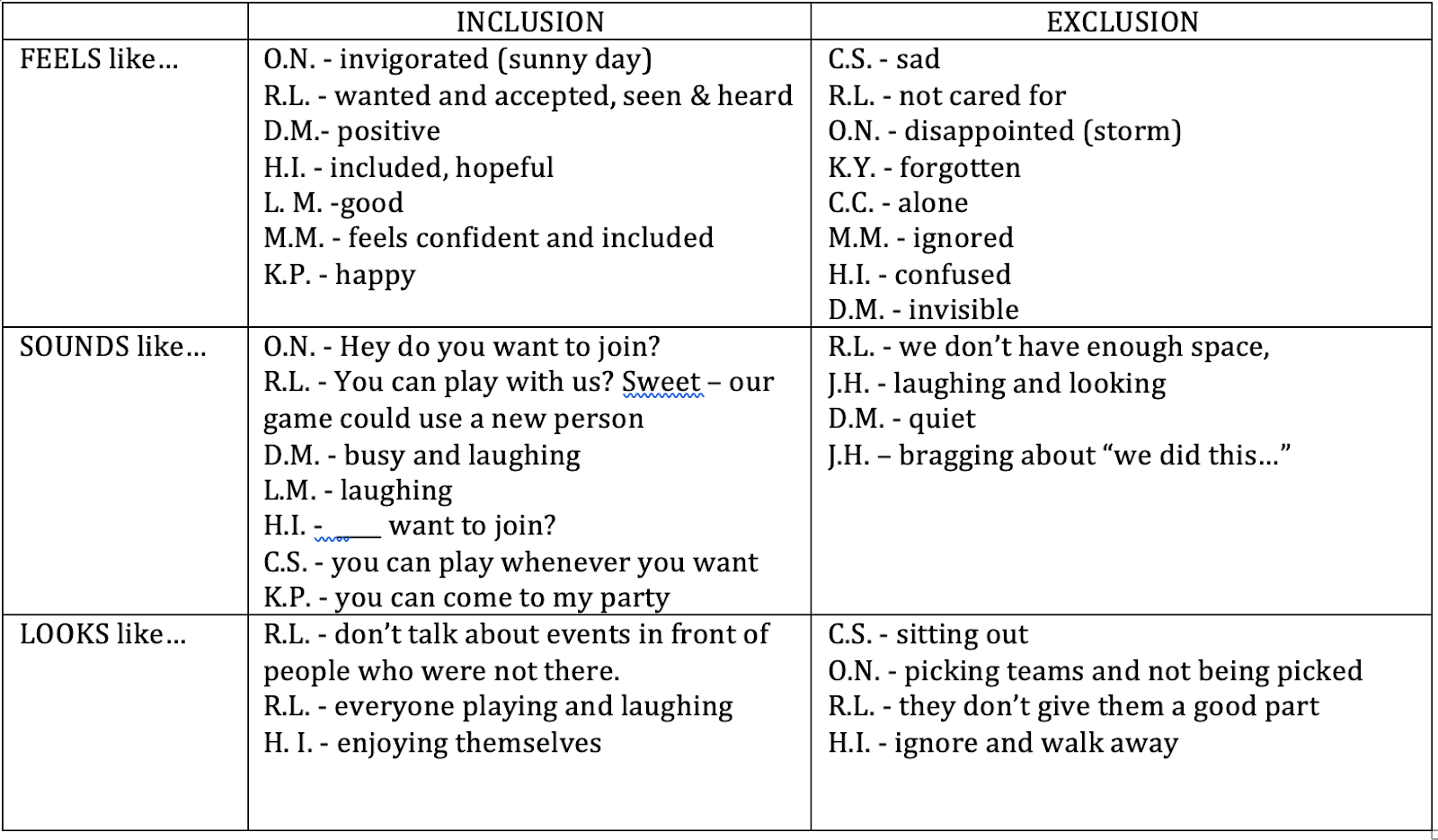Week 6
Hello Ramsay Families!
Here is a quick look into our learning this week. We hope you all have an amazing long weekend!
In ELA, students worked to finish typing their land acknowledgment and looked closely at editing criteria. Once students worked to edit their own work, they then collaborated with a partner to review one another’s work in order to provide feedback. Learning objectives for this process included:
- I can revise and edit statements to clarify meaning.
- I can apply a variety of strategies to assist with spelling and apply conventions in my own writing.
- I can use developed criteria to evaluate texts and provide feedback to others.
Math
In math this week, students were introduced to the formulas for solving the perimeter and area for both regular and irregular shapes, and had opportunities to calculate the measurement for both. Next week, students will begin designing, constructing and comparing different rectangles for either a given perimeter or area.
Social Studies
Active and responsive participation in a democracy includes voting, which is an important way in which citizens can bring about change in their community. This week in Social Studies, students were preparing for the upcoming provincial referendum question on Daylight Savings Time. In class, students were split into two groups in order to research both sides of the issue. Their research will support students in preparing their ideas and reasons for their position as they prepare to debate their ideas next week in class. They will then have an opportunity to vote for their preference on October 18th as part of the local municipal election.
Provincial Ballot Referendum Question – Daylight Savings Time
Vote Yes – You support a permanent change to summer hours and to no longer changing the clocks twice a year.
Vote No – You support continuing the current practice of turning the clock forward in March and backward in November.
In French, we are learning fall vocabulary and practicing how to describe things we see around us. In order to support vocabulary development, students are learning the song, "L'arbre est dans ses feuilles." Our first steps were to identify and create a visual vocabulary sheet that included all of the new French vocabulary we are learning.
Students were then given a copy of the lyrics and asked to highlight the vocabulary words we have been focusing on. We then listened to the song to see if we could hear the words and identify them in the song. Here is the link to the song we listened to this week:
L'arbre est dans ses feuilles ( start at 25 seconds)
Here is a link to the song we will use this week in class:
Next week, students will create an art piece that represents their learning of the new fall vocabulary. Here are the lyrics to the final part of the song that they will represent through their art.
L’Arbre est dans ses feuilles
L’amour est dans le cœur
Le cœur est dans l’oiseau
L’oiseau est dans l’œuf
L’œuf est dans le nid
Le nid est dans le trou
Le trou est dans le nœud
Le nœud est dans la branche
La branche est dans l’arbre
L’arbre est dans ses feuilles
On Monday, we went on a community walk in order to observe and record information about trees in our local community. We couldn't have asked for a more beautiful fall day. Our learning outcomes for our walk were as follows:
I can identify of at least four trees found in the local environment.
I can describe and classify leaf shapes, leaf arrangements, branching patterns and the overall form of a tree.






Awesome update! I think Oct. 18 is a non instruction day for students? Will they be voting virtually or on a different day?
ReplyDelete